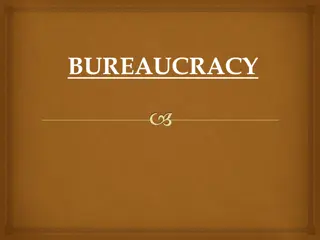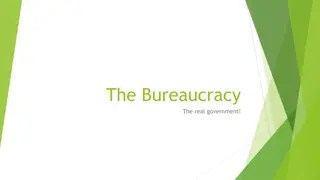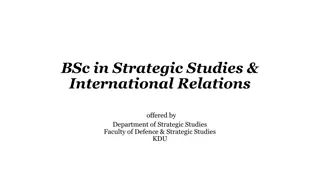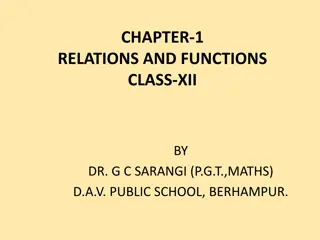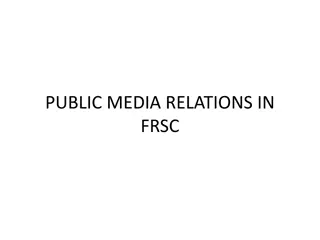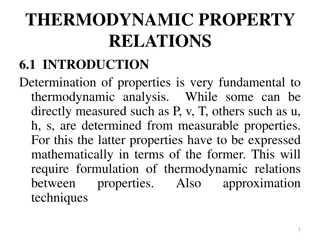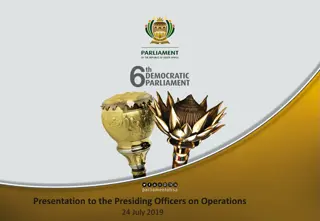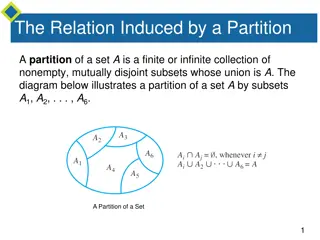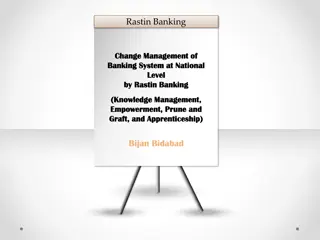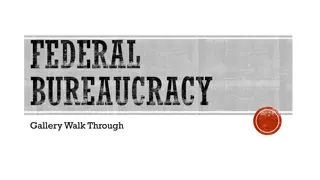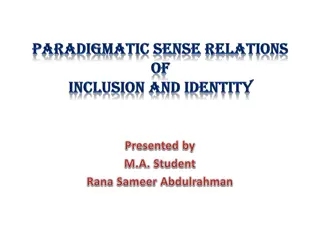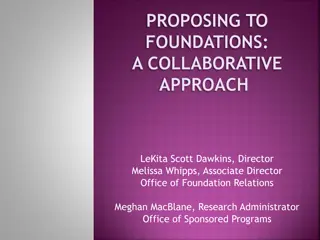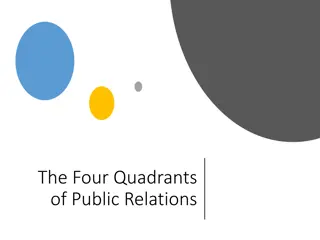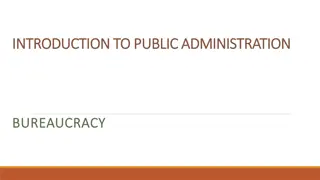
Bureaucracy, Human Relations, and Modern Management
Explore the concepts of bureaucracy, human relations, and modern management, including the principles of Max Weber's bureaucracy and the impact of the Hawthorne Studies on management practices. Discover the advantages and disadvantages of bureaucratic systems, as well as the significance of social factors in the workplace.
Download Presentation

Please find below an Image/Link to download the presentation.
The content on the website is provided AS IS for your information and personal use only. It may not be sold, licensed, or shared on other websites without obtaining consent from the author. If you encounter any issues during the download, it is possible that the publisher has removed the file from their server.
You are allowed to download the files provided on this website for personal or commercial use, subject to the condition that they are used lawfully. All files are the property of their respective owners.
The content on the website is provided AS IS for your information and personal use only. It may not be sold, licensed, or shared on other websites without obtaining consent from the author.
E N D
Presentation Transcript
BUREAUCRACY, HUMAN RELATIONS, AND MODERN MANAGEMENT ARMAAN SALIK J
BUREAUCRACY Max Weber (1864-1920):A German sociologist and political economist, Weber is considered the father of modern bureaucracy. He introduced the concept to highlight the importance of a systematic and rule-based approach to managing large organizations.
BUREAUCRACY -WEBER Bureaucracy is a formal system of organization and administration designed to ensure efficiency and effectiveness. It emphasizes a structured and organized approach to management, with a clear chain of command, formal rules, and standardized procedures. Key Characteristics: 1. Hierarchy of Authority: Clear chain of command with defined levels of authority. 2. Division of Labor: Specialization of tasks for efficiency. 3. Rules and Regulations: Standardized procedures for consistent operations. 4. Impersonality: Decisions based on objective criteria rather than personal relationships. 5. Formal Selection: Hiring and promotion based on qualifications and merit.
Advantages: Efficiency: Clear roles and procedures lead to optimized workflows. Consistency: Standardized rules ensure predictable outcomes. Fairness: Impersonality prevents favoritism. Stability: Clear hierarchy provides a stable organizational structure. Disadvantages: Rigidity: Difficulty adapting to change due to inflexible rules. Bureaucratic Red Tape: Excessive paperwork and procedures can slow down processes. Lack of Flexibility: Emphasis on rules can hinder creativity and innovation. Human Disengagement: Impersonality can lead to low employee morale.
HUMAN RELATIONS -THE HAWTHORNE STUDIES The Human Relations Approach emphasizes the importance of the human element in the workplace. It suggests that employee well-being, motivation, and social interactions significantly impact productivity and organizational success. The Hawthorne Studies were a series of experiments conducted at the Hawthorne Plant to study the effects of physical conditions on worker productivity. Key Findings: Social Factors: Workers' productivity increased when they felt valued and part of a supportive group, highlighting the importance of social and emotional factors in the workplace. Attention and Observation: The mere fact that workers were being observed made them feel important, leading to improved performance a phenomenon now known as the "Hawthorne Effect." Group Dynamics: The studies revealed that informal social groups within the workplace had a significant impact on worker behavior and productivity. Workers were more productive when they felt a sense of belonging and when their social needs were met.
IMPACT ON MANAGEMENT The Human Relations Approach shifted management's focus from strict control and efficiency (as seen in Bureaucracy) to the well-being and motivation of employees. Management Practices Influenced: Leadership Style: Encouraged participative and supportive leadership rather than authoritarian control. Communication: Emphasized open and two-way communication between managers and employees. Employee Motivation: Recognized the importance of addressing psychological and social needs in motivating employees. Work Environment: Promoted creating a work environment that fosters collaboration, recognition, and employee satisfaction.
MODERN APPROACH TO MANAGEMENT The Modern Approach to management incorporates various contemporary theories that build on classical and human relations approaches. It views organizations as complex systems that need to be managed with a balance between structure and flexibility,people and processes. Key Concepts in Modern Management 1. SystemsTheory 2. ContingencyTheory 3. Total Quality Management (TQM) 4. Lean Management
BENEFITS OF THE MODERN APPROACH Flexibility: Ability to adapt to changing environments and circumstances. Holistic View: Consideration of both internal and external factors affecting the organization. Continuous Improvement: Focus on ongoing enhancement of processes, products, and services. Innovation: Encouragement of creativity and innovation within the organization.
CHALLENGES AND CONSIDERATIONS Complexity: Implementation can be challenging due to the need to balance various elements and adapt to different situations. Leadership Requirement: Strong leadership is essential to guide and sustain these modern management practices. Cultural Alignment: Successful adoption of modern management approaches often requires a cultural shift within the organization.
SYSTEMS THEORY Concept: Views an organization as a system composed of interrelated and interdependent parts. Emphasizes the need to understand the interactions between these parts and how they contribute to the overall objectives of the organization. Application: Encourages managers to consider both internal factors (e.g., departments, teams) and external factors (e.g., market trends, economic conditions) when making decisions. Example: A company using systems thinking might analyze how changes in one department (e.g., marketing) affect other departments (e.g., production).
CONTINGENCY THEORY Concept: Proposes that there is no one-size-fits-all approach to management. Instead, the best management style depends on the specific circumstances of the situation. Application: Encourages managers to adapt their strategies based on the context, including factors like the organization's size, the technology in use,and the environment. Example: A small startup might adopt a more flexible and informal management style, whereas a large corporation might require a more formalized approach.
TOTAL QUALITY MANAGEMENT (TQM) Concept: Focuses on continuous improvement in all aspects of an organization s operations, with the goal of achieving high-quality outcomes. It involves everyone management to frontline workers,in the pursuit of quality. Application: Emphasizes customer satisfaction, process optimization, and a culture of quality throughout the organization. Example: Implementing a feedback loop where customer feedback is continuously used to improve products and services. in the organization, from top
LEAN MANAGEMENT Concept: A methodology that aims to eliminate waste (non-value- adding activities) and improve efficiency in the production process. It focuses on delivering value to the customer while using the least amount of resources. Application: reducing lead times, and optimizing workflows. Involves identifying and eliminating bottlenecks, Example: A manufacturing company might implement lean practices by reorganizing its production line to minimize waste and improve workflow efficiency.
COMPARISON OF THEORIES BUREAUCRACY VS. HUMAN RELATIONS Focus: Bureaucracy: Emphasizes a structured, rule-based approach to management. Prioritizes organizational efficiency, standardization, and clear hierarchies. Decisions are made based on rational-legal authority, ensuring consistency and fairness. Human Relations: Centers on the social and psychological needs of employees. Highlights the importance of employee satisfaction, motivation, and interpersonal relationships. Decisions are often influenced by understanding human behavior, communication, and leadership.
Approach to Management: Bureaucracy: Relies on formal authority, established procedures, and a top-down approach to decision- making. Suitable for large organizations where consistency and control are essential. Human Relations: Encourages participative management, where employees have a voice in decision-making. Aims to create a supportive work environment that fosters collaboration and trust.
Key Strengths: Bureaucracy: Ensures stability, order, and predictability in organizational operations. Clear roles and responsibilities reduce ambiguity and conflict. Human Relations: Boosts employee morale and motivation, leading to higher productivity. Fosters a sense of belonging and reduces turnover by addressing employee needs.
Key Weaknesses: Bureaucracy: Can lead to rigidity, resistance to change, and a lack of innovation. May stifle creativity and employee initiative due to strict adherence to rules. Human Relations: Risks overemphasizing social aspects at the expense of organizational goals. May lead to a lack of structure and inefficiency if not balanced with clear objectives.


